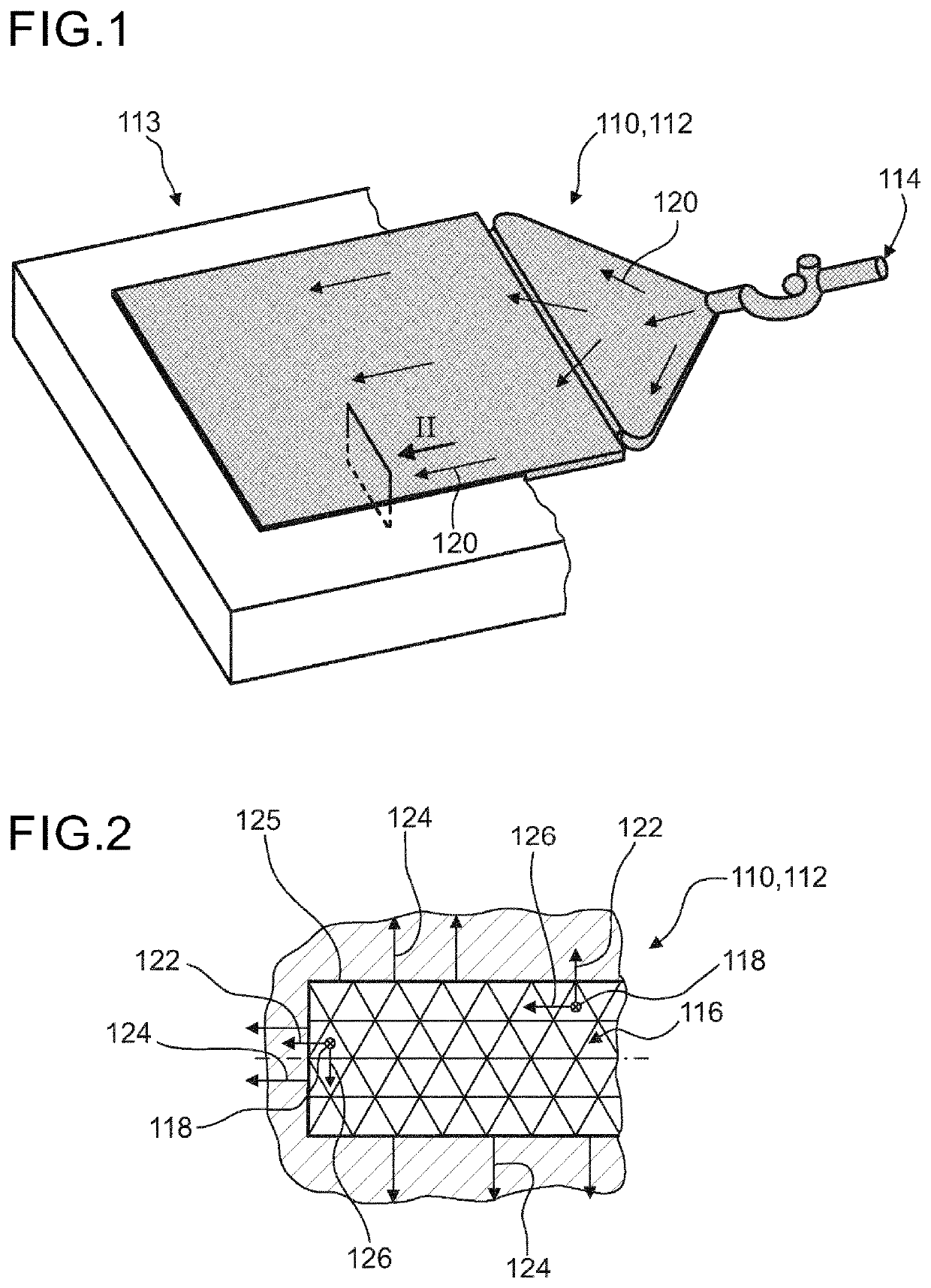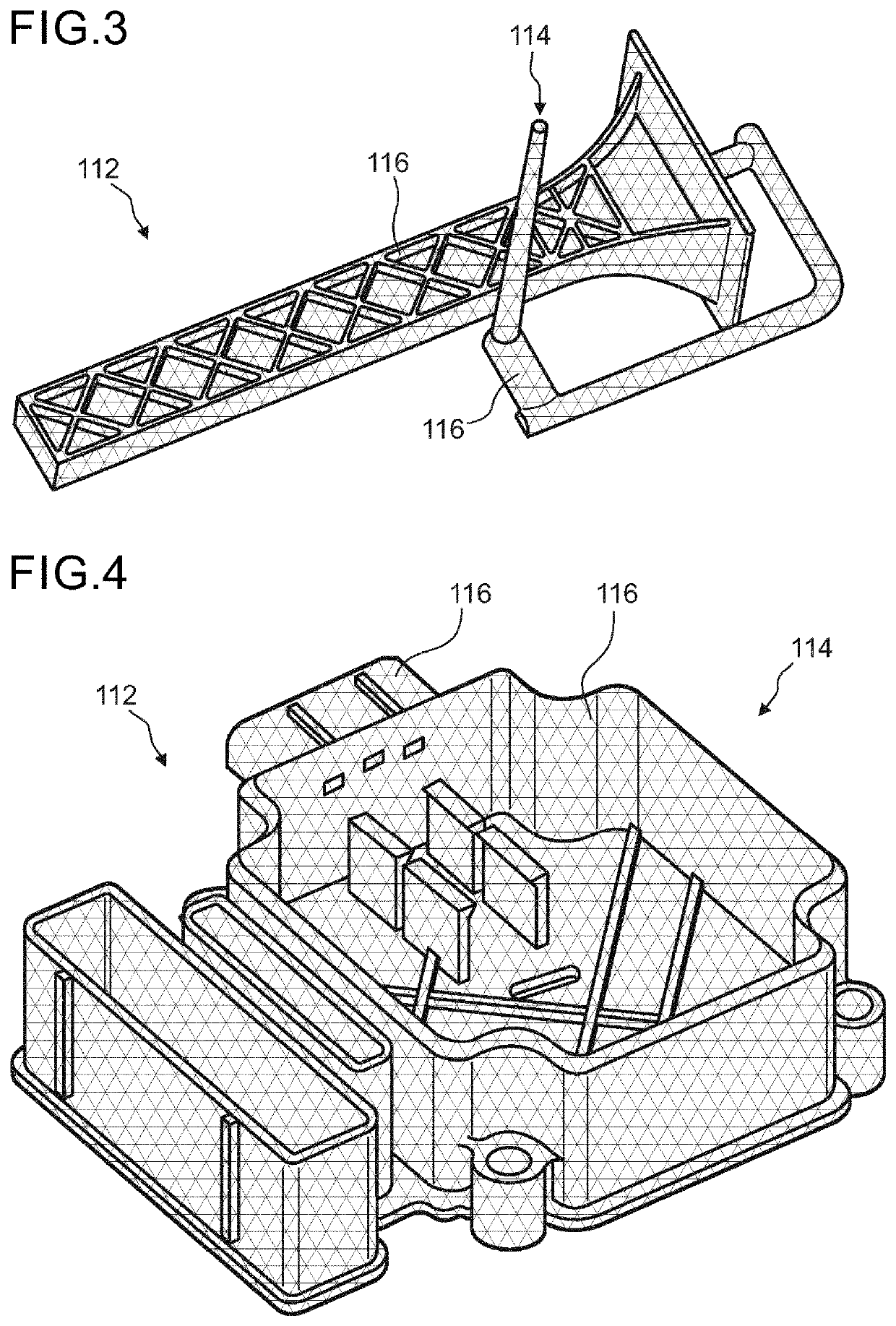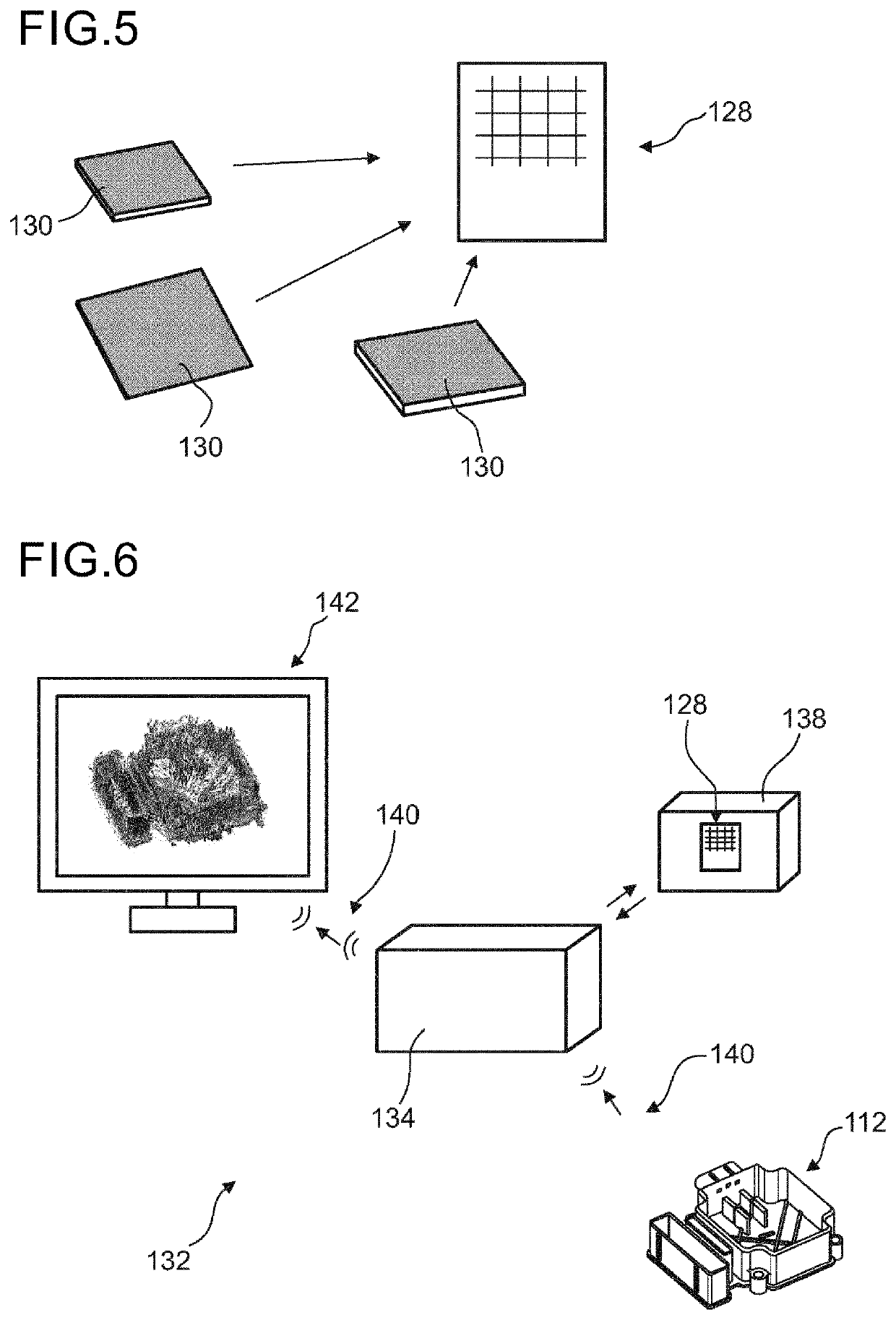Computer-implemented method for simulating a filling process of a mold cavity
a technology of mold cavity and computer implementation, which is applied in the field of computer implementation of methods, can solve the problems of complex calculations, time-consuming and laborious, and the inability to easily modify the die, and achieves the effect of requiring the performance of complex calculations and methods
- Summary
- Abstract
- Description
- Claims
- Application Information
AI Technical Summary
Benefits of technology
Problems solved by technology
Method used
Image
Examples
Embodiment Construction
[0207]In FIG. 1 an embodiment of CAD data of an object 110 and a corresponding embodiment of a mold cavity 112 for injection molding the object is illustrated in a perspective view. For illustrational purposes a die 113 having a void in the shape of the mold cavity 112 is partly illustrated. A cavity injection point 114 may be defined on the mold cavity 112. FIG. 2 shows a section view of part of the mold cavity 112 as illustrated in FIG. 1. The mold cavity 112 may be discretized into a plurality of cells 116. Each cell 116 may comprise a cell coordinate system. The cell coordinate system may be defined by a first principal direction 118 parallel to a flow direction 120, as exemplarily illustrated in FIG. 1. Further, the cell coordinate system may be defined by a third principal direction 122 parallel to a surface normal direction 124, as exemplarily illustrated in FIG. 2, wherein the surface normal direction 124 may be oriented in a perpendicular fashion to the nearest cavity surfa...
PUM
| Property | Measurement | Unit |
|---|---|---|
| processing time | aaaaa | aaaaa |
| length | aaaaa | aaaaa |
| length | aaaaa | aaaaa |
Abstract
Description
Claims
Application Information
 Login to view more
Login to view more - R&D Engineer
- R&D Manager
- IP Professional
- Industry Leading Data Capabilities
- Powerful AI technology
- Patent DNA Extraction
Browse by: Latest US Patents, China's latest patents, Technical Efficacy Thesaurus, Application Domain, Technology Topic.
© 2024 PatSnap. All rights reserved.Legal|Privacy policy|Modern Slavery Act Transparency Statement|Sitemap



